Emek Shaveh: Promoting the Shared Heritage of Israel and Palestine
By Talya Ezrahi
Emek Shaveh is an NGO founded in 2009 by archaeologists and activists in Israel in response to the politicization of the country’s archaeology and its detrimental impact on both the field of archaeological research and on the potential for achieving a peaceful settlement to the Palestinian-Israeli conflict. Of particular concern was the growing role of settler organizations in operating and managing archaeological tourist sites and shaping the policies informing patterns of excavation and development. Our work comprises East Jerusalem, the West Bank, and sites inside sovereign Israel.
Ancient sites and cultural heritage have played a significant role in Israel’s nation-building project. However, over the past two decades, the quest for material confirmation of Jewish roots in the land of Israel has been turned by settlers and consecutive rightwing governments into a political tool to create facts on the ground, redefine the religious and cultural identity of East Jerusalem and locations across the West Bank, and sideline the Muslim and Palestinian heritage associated with those sites.
We believe that ancient sites in Israel and Palestine are public assets that belong to members of all communities, faiths, and peoples and that archaeology can become an excellent resource for building bridges between them.
Emek Shaveh’s mission is to monitor and inform about the politicization of archaeology and tourism in East Jerusalem, the West Bank, and inside Israel. We publish reports. We conduct tours that challenge the biased narrative offered at the sites and present instead an inclusive research-based historical narrative that emphasizes Israelis’ and Palestinians’ shared heritage. We also advocate against the dispossession of Palestinian communities in the name of archaeology. The development of archaeological sites in East Jerusalem and the West Bank impinges on the lives of Palestinian communities—denying them access to land, fencing off their public spaces, and prohibiting construction or renovation work. Using legal action and political and public advocacy, we challenge those who misuse archaeology and tourism development.
The historic narrative presented to the public at archaeological sites plays a crucial role in shaping the public’s perception of past and present. We strongly believe in the necessity of an inclusive narrative in order to embody this land’s diverse past. Unfortunately, at many sites the public is now exposed to a heavily biased narrative that supports the idea of exclusive Jewish rights to the land. Central to our work, therefore, is the highlighting of a multicultural narrative that values the material remains of all the cultures who left their traces here and the diverse ethnic and religious communities who today share the land’s rich heritage.
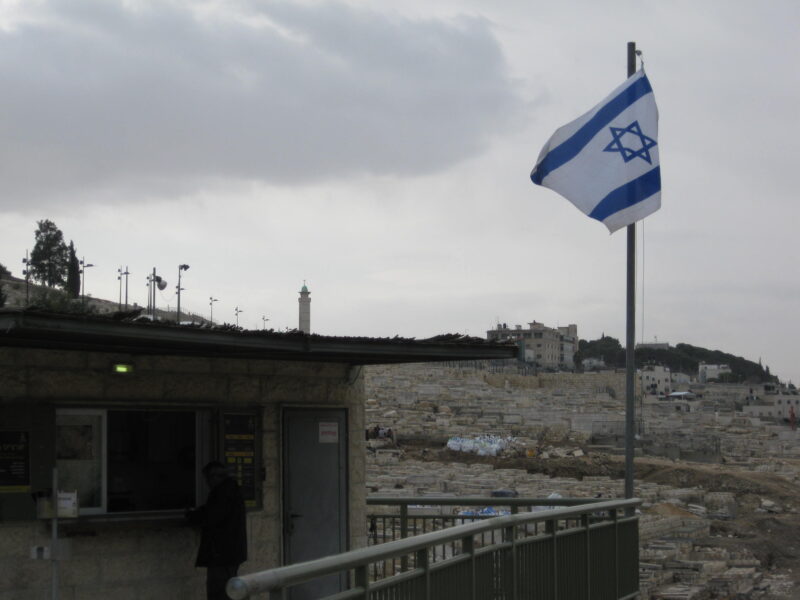
Elad run visitors center at Mount of Olives; Photo Courtesy of Emek Shaveh
East Jerusalem
Jerusalem is one of the most highly excavated cities in the world. Most of the archaeological activity is focused on the “Historic Basin” or “Holy Basin,” an area of roughly two square miles that includes the Old City and a belt around it. Archaeological research in the city dates back 150 years, but in the past 25 years, Jerusalem’s ancient sites have become a central feature of the settlement enterprise in politically sensitive neighborhoods of East Jerusalem.
The Elad (or Ir David) Foundation is the primary settler organization engaged in developing historic sites in Jerusalem.Elad began its activities in the late 1980s with the mission of settling Jews in the Palestinian neighborhood of Silwan. Silwan is also the location of the “City of David,” the place where Jerusalem emerged as a Canaanite kingdom 4000 years ago, the Kingdom of Judah was located between the 8th – 6th centuries BCE, and an impressive thoroughfare of the early Roman period (1st century BCE-1st century CE) has been found. There are also finds from the late Roman, Byzantine, and early Islamic periods. The settlers claim that the archaeological finds also support the biblical account of King David’s rule in Jerusalem in the 10th century BCE—but this theory is disputed by most scholars. By the mid-1990s, Elad began funding excavations on site, and soon was contracted by the Israeli government to operate the archaeological park. Prior to COVID, the City of David was visited by hundreds of thousands of international visitors a year and it is still a central destination for Israeli school trips and the educational curriculum for soldiers, with groups there offered a national-religious narrative of Jewish continuity from the time of King David to the present day.
Over the past decade, Elad has expanded its operations to multiple sites in the Historic Basin, including the Ben Hinnom Valley between Silwan and the Mamilla neighborhood in West Jerusalem, and the Peace Forest, which borders the Palestinian neighborhood of Jabel Mukaber. The result is a network of historic sites and tourist attractions guided by a narrative that justifies the settlements in East Jerusalem and undermines any potential for a shared Palestinian-Israeli future in the city.
Emek Shaveh has been monitoring these events in Jerusalem for the past twelve years. We have published multiple reports as well as guidebooks dedicated to the city’s multicultural history. We’ve conducted thousands of tours for the general public, policymakers, and community activists focusing on the impact of the excavations and tourism development on the lives of the local Palestinian residents as well as on the use of historic narrative to cultivate a particular ideological agenda. And we’ve also litigated against the fencing off of public spaces and illegal settler construction.
One example in which previously public spaces have been fenced off and access denied to the local Palestinian community is the ancient Gihon Spring (also known as, “Ain-Umm al-Daraj” and “St. Mary’s Pool”) in City of David/Silwan. The source of water that enabled the emergence of ancient Jerusalem almost 4,000 years ago, Gihon Spring is sacred to all three monotheistic religions and is where Silwan residents used to bathe before weddings, during family celebrations, and on weekends and holidays.
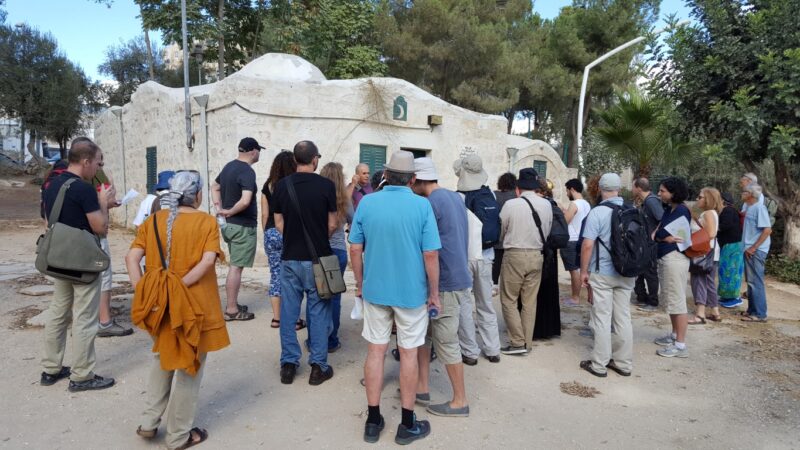
Tour of Muslim Cemetery in Mamilla in West Jerusalem; Photo Courtesy of Emek Shaveh
In the 1990s, Elad, under the auspices of the Nature and Parks Authority, barred public (i.e., Palestinian) access to the spring. Citing the ongoing excavations, the NGO had effectively turned the site into the private spring of the City of David settlers. Together with residents of Silwan, Emek Shaveh petitioned against this discriminatory policy, and a district court ruled that the site must be open to everyone, albeit subject to an entry fee.
One of the most controversial projects in the Historic Basin is the plan to build a cable car from West Jerusalem to the Elad Foundation’s planned tourism hub at the entrance to City of David/Silwan. Led by Emek Shaveh, a wide-ranging coalition of organizations including environmental, planning, and rights groups has mobilized against the plan. All the groups share a concern about the destructive impact the project would have on the timeless character of Jerusalem’s ancient core. The campaign has involved objections signed by hundreds of archaeologists, urban planners, architects, and intellectuals and a letter from 27 internationally renowned architects and planners. Objection to the plan has reached its final furlong with our appeal to the Supreme Court.
A ruling is due in the fall, and so far, the judges have been highly critical of the plan’s hasty and highly irregular approval process. Even if the court doesn’t nix the project, we’re pleased that our campaign has brought the dangers of destructive, politically-driven hyper-development in Jerusalem’s historic core to the public’s awareness and that we’ve assembled a diverse coalition of organizations to stand against it.
One reason organizations like Elad have been able to flourish is Israel’s Law of Antiquities. The law has made the Israel Antiquities Authority—the ultimate decision-maker on archaeological excavation and conservation in East Jerusalem and inside Israel’s Green Line—dependent on funding from external developers driven by financial or ideological gain. This has compromised the Authority’s ability to make decisions on purely professional grounds.
Emek Shaveh has been partnering with Hebrew University’s Campus Community Partnership Program at the Faculty of Law to amend the Antiquities Law and rectify this anomaly. We believe that if this conflict of interest is resolved, the Antiquities Authority would be freed from dependence on developers and could make decisions on a purely professional basis, to the benefit of the country’s multilayered history. The amendment has now been drafted, and we are working with Members of the Knesset to get it passed.
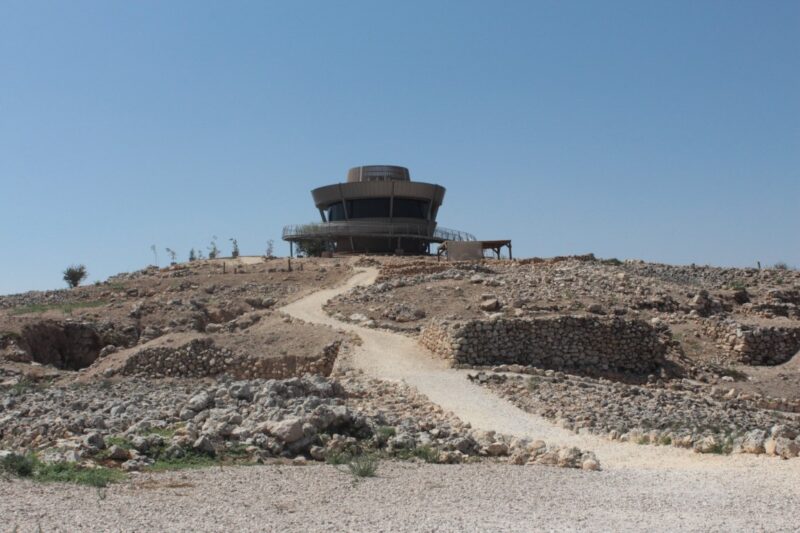
Visitor’s Center at Tel Shiloh in the West Bank; Photo Courtesy of Emek Shaveh
The West Bank
Archaeology figures at the center of conflict over land and history in the West Bank, too, where virtually every Palestinian village is built on, or next to, an antiquities site. Indeed, living in proximity to such sites is integral to the life of a Palestinian villager.
Ancient sites like Susya, near Hebron, and Tel Shiloh, near the village of Qaryut, were excavated in the 1980s and saw the local Palestinian community banished from their lands to make way for tourist sites. In both cases, the archaeological site was later included within the jurisdiction of adjoining settlements. Tel Shiloh, like the City of David, was handed over to the management of a private settler organization. In 2016, following a petition by Emek Shaveh, the area military commander signed a declaration permitting Palestinians to enter the site. A video shows Qaryut residents returning to their land for the first time in decades. Sadly, however, they are no longer allowed to cultivate it, and must pay a fee to visit.
Recently, springs and natural pools in the West Bank have become sites of contention. Nabi Aner is a system of springs and an archaeological site on land owned by residents of two villages near Ramallah. The site also houses a local pilgrimage shrine and was used for growing olive, almond, apple, fig, and pomegranate trees. For almost twenty years, the Palestinian landowners have been denied access to their land, and in 2014 the settlement movement started developing the site, naming it “Gan Hashlosha” (“Park of the Three”) after the three Israeli youths who had been murdered that year. Benches, picnic tables, and paths were added without the landowners’ permission, with the aim of turning it into a tourist and leisure attraction. Together with Yesh Din and Emek Shaveh, the Palestinian villagers petitioned the High Court of Justice to instruct the Civil Administration, an arm of the military government, to demolish this illegal construction. In June 2020, the State declared it would dismantle it within 90 days, but so far it has done so only partially. The case continues.
Over the past year, the settler movement has succeeded in procuring funding and official authorization from the military government to patrol and monitor heritage sites, ostensibly to stop theft and destruction of antiquities by Palestinians. Although antiquity theft in the West Bank is a problem, the settlers are exploiting this to set up a widespread surveillance apparatus to pinpoint and crack down on Palestinian construction, agricultural activity, and heritage site development. Even beforehand (2017-2019), there was a 162% rise in demolition orders for Palestinian dwellings built on antiquity sites.
Emek Shaveh provides professional consultation to individuals and communities across the West Bank whose homes or lands are at risk due to their being located on a declared archaeological site.
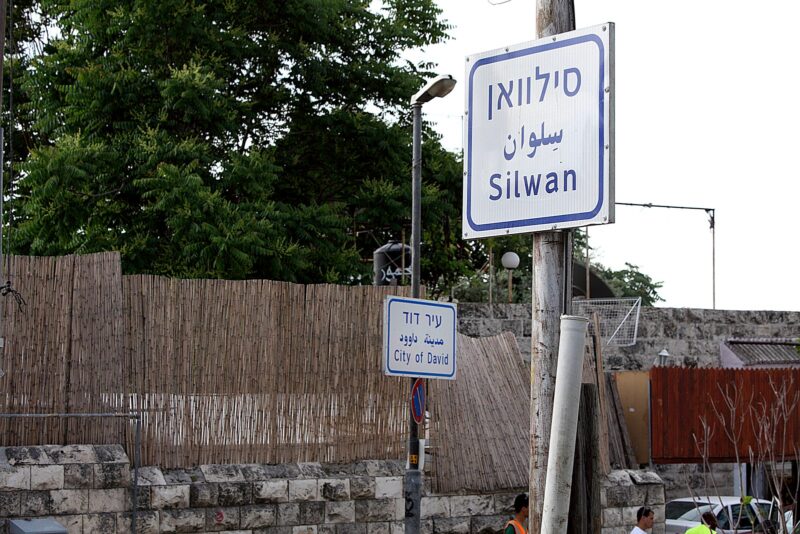
Signs of Silwan and City of David; Photo Courtesy of Emek Shaveh
Inside Israel
Within sovereign Israel, we have launched a joint project with the Arab Culture Association (ACA) in Haifa to preserve and promote sites which embody the heritage of minority groups.
Focusing on Israel’s mixed cities (Lod, Ramleh, Acre, Haifa), where Arab-Jewish tensions are high, we have found many structures dating from the Islamic periods to be in a state of disrepair and neglect. The result is a public landscape where the materials from minority cultures are overlooked and undervalued. This, in turn, leads the public to perceive indigenous minority groups as historical outsiders, a perception that encourages discrimination against them.
Our report, Selective Conservation: Policy and Funding for Minority Heritage Sites in Israel, and the ACA’s report, A Vanishing Heritage, throw light on the discriminatory policy in Israel against the development of heritage sites associated with non-Jewish groups, including inequitable funding. We have written about how the neglect of minority heritage sites both results from and reinforces the authorities’ attitudes toward the Arab population in mixed cities. We are working diligently to advance a reevaluation of Israel’s heritage policy.
We believe that placing value on the conservation and development of these sites with the cooperation, involvement, and leadership of the local Arab community can bring about positive change, empowering the community and strengthening social cohesion. This will also generate greater awareness within the Jewish-Israeli community of the land’s multifaceted heritage, thus fostering open dialogue between Jews and Arabs.
Following the interethnic violence in mixed cities this past spring, many Jewish-Israelis have exhibited a keen interest in understanding the underlying realities there. So, together with local residents, we have also been conducting tours of Lod which present the city’s fascinating yet neglected heritage as well as the social and political challenges facing its Arab community.
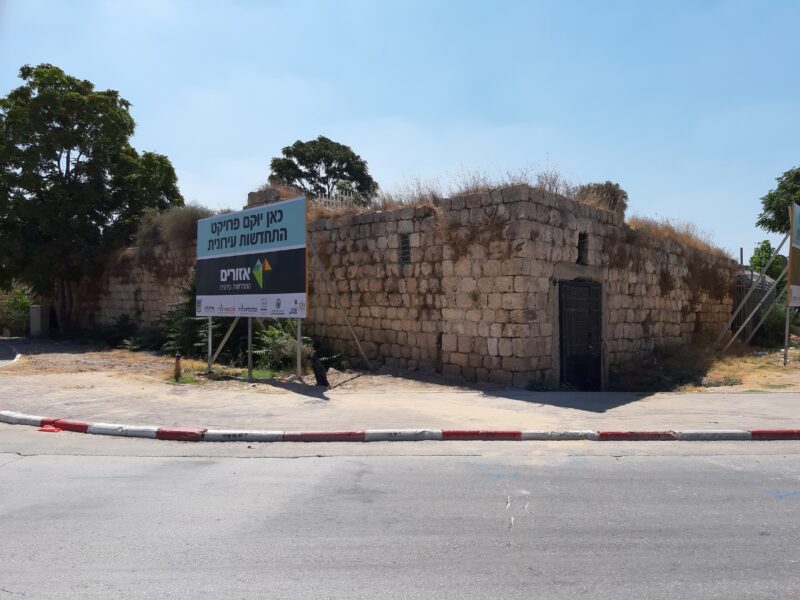
Lod’s House of Arches, an Ottoman-era structure. Conservation planning did not involve local Arab residents; Photo Courtesy of Emek Shaveh
It’s all about the narrative
The stories we tell about a place shape our attitudes about who belongs there and who has a right to control it. In Emek Shaveh, we reject one-sided narratives that exclude the Other and believe that, since Arabs and Jews share a history here, this should be reflected in a “shared heritage” approach to excavation and preservation of historic sites throughout the land.
Since we were founded in 2009, we have introduced the concept of a shared heritage into the professional and public discourse. Through our tours (including virtual Zoom tours since the start of the pandemic), public campaigns, advocacy, and litigation, we highlight the multicultural history of this land as a tool to promote an equitable approach to excavation and conservation and to build bridges between the different communities. The heritage assets of this country are a nonrenewable resource. It’s our duty to preserve them in a way that does justice to its multilayered past and its multicultural mix in the present.
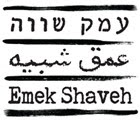
———–
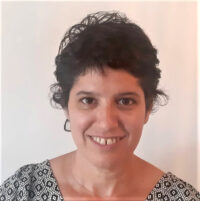
Talya Ezrahi is the International Relations Coordinator at Emek Shaveh.

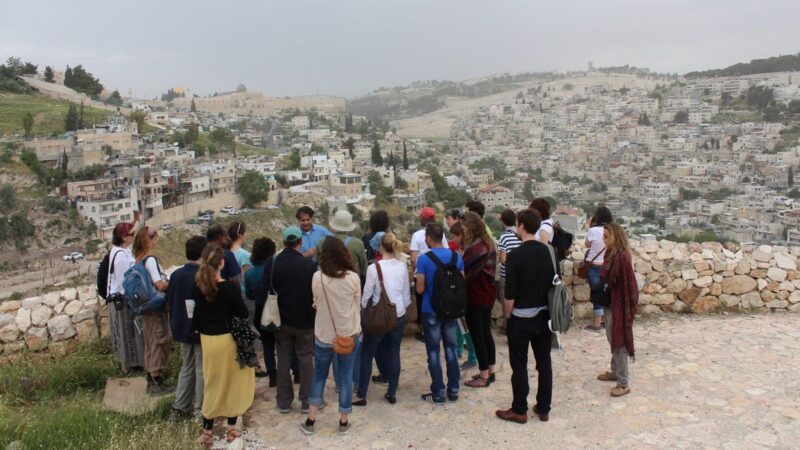


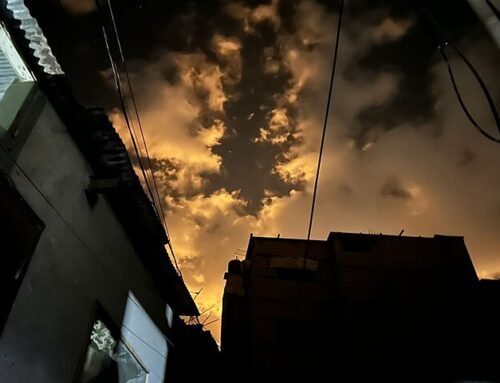
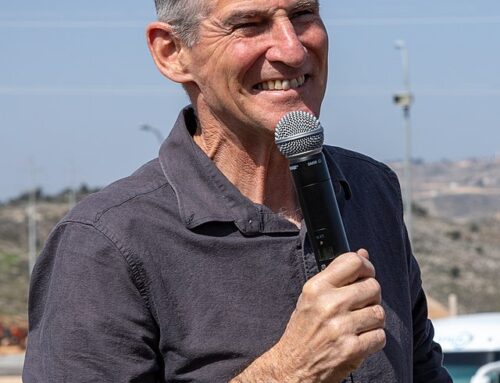
Leave A Comment